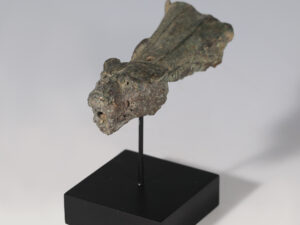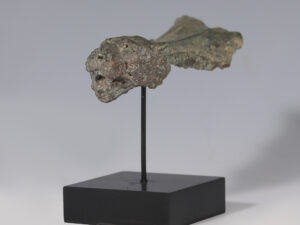Protomes were normally attached as decoration to larger items like horse tack, chariots, domestic items, jewellery boxes or furniture. They are often in the form of a head, bust or half figure, usually depicting characters or animals from Greek and Roman mythology.
During the Roman Empire, horses were extremely important for battle, as well as for aspects of everyday life, such as transportation, hunting, farming, and chariot racing. The Romans associated the horse with the spoils of war, connecting it symbolically with power, victory, honour, domination, and virility. In Graeco-Roman mythology and culture, the horse was said to have been created by Neptune (Poseidon) and devoted to Pluto (Hades) and Mars (Ares). The Romans also believed the horse to be a symbol of the continuity of life, and would sacrifice a horse to the god Mars every October, keeping its tail through the winter as a sign of fertility and rebirth.





















